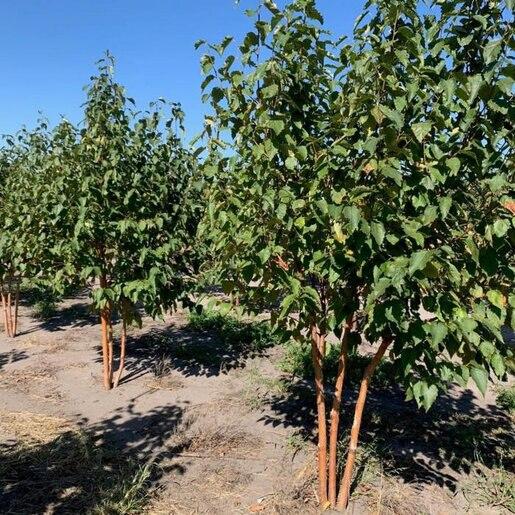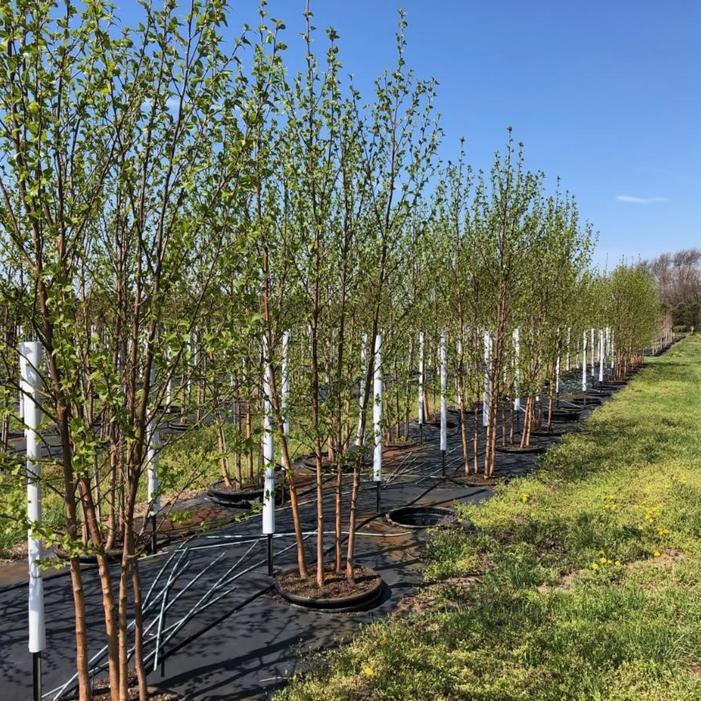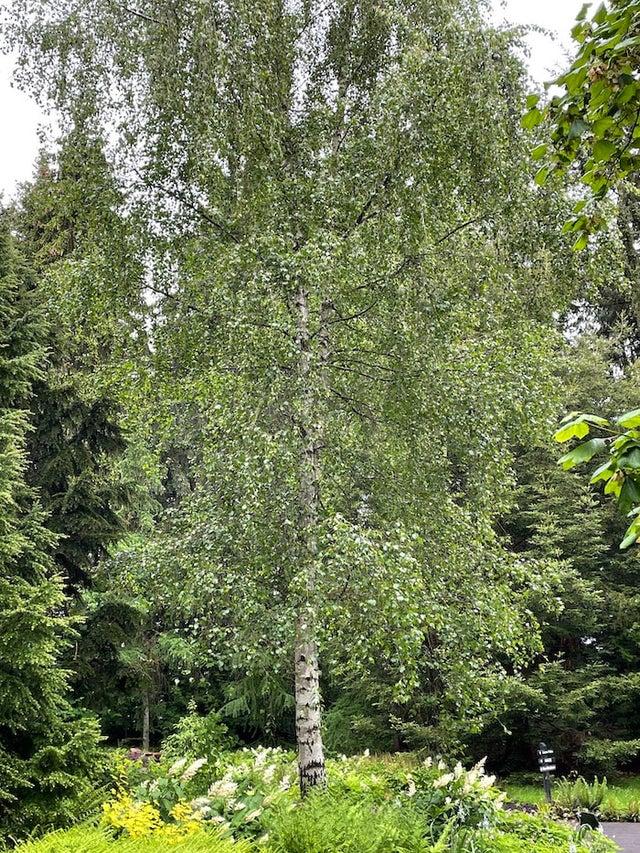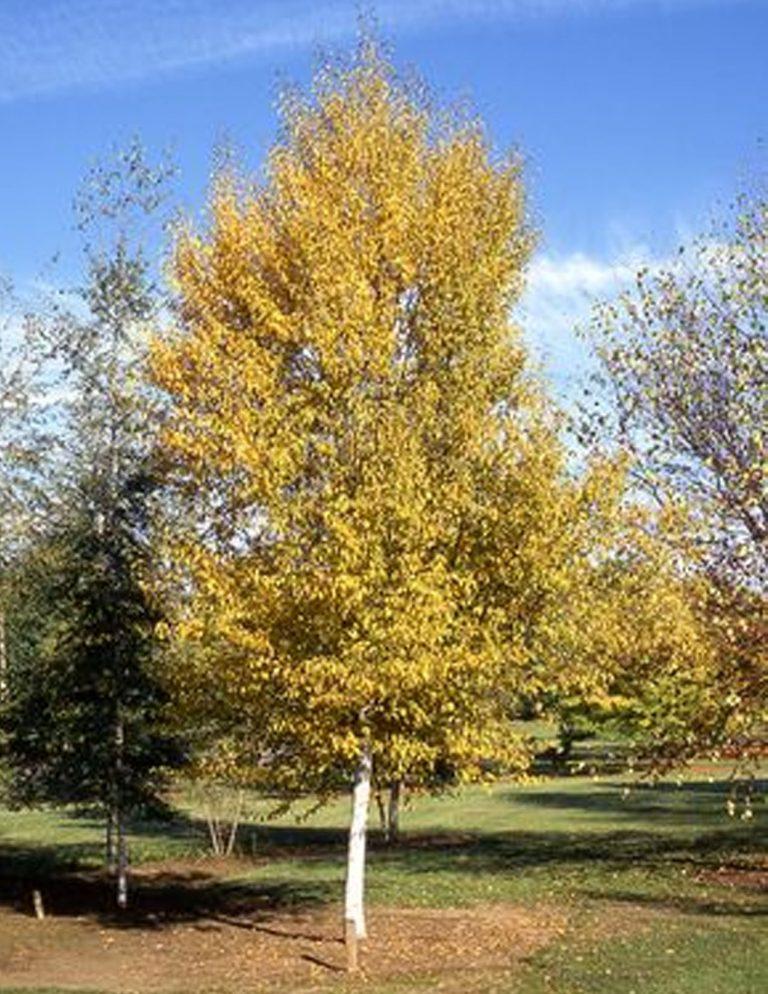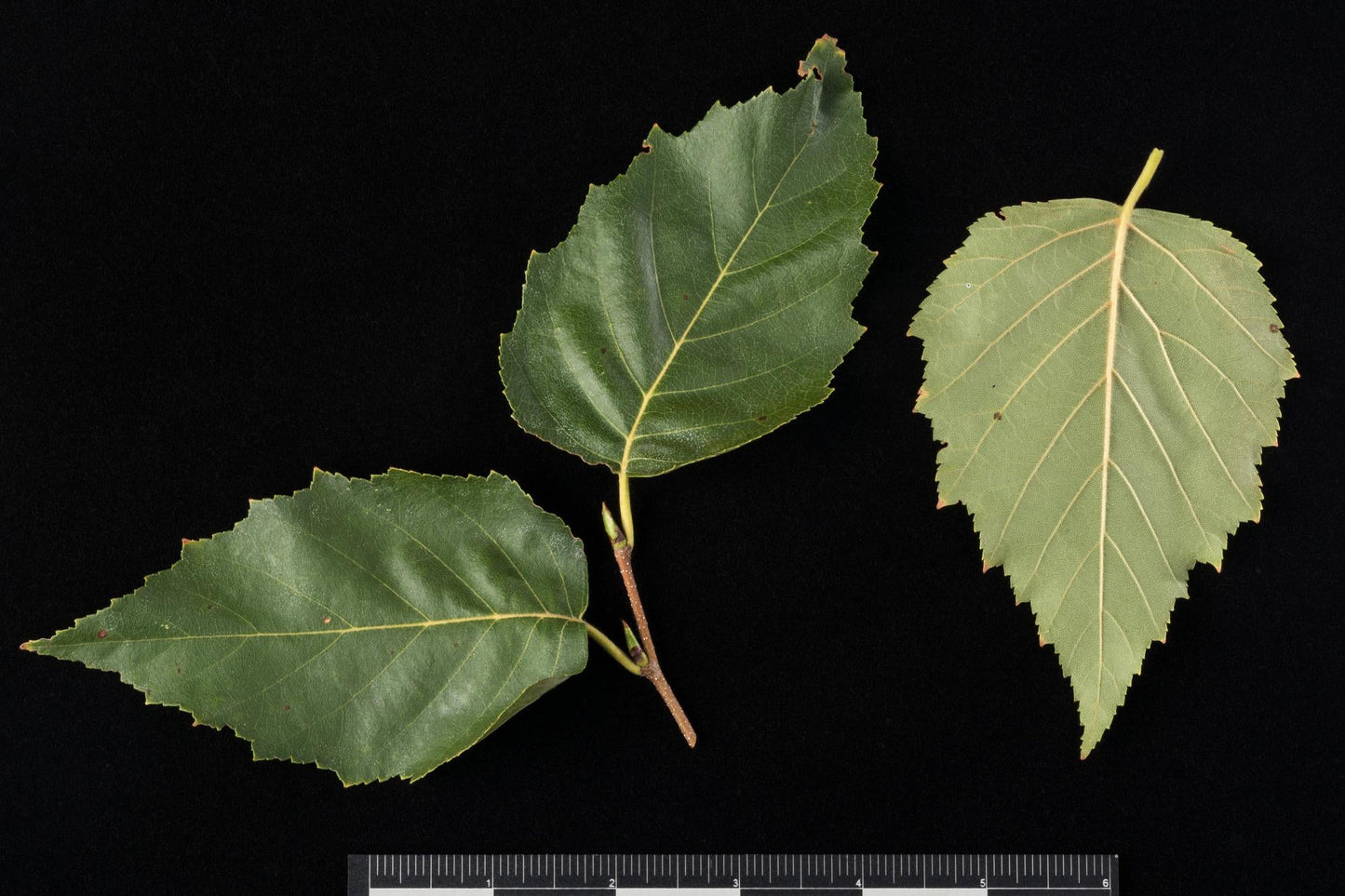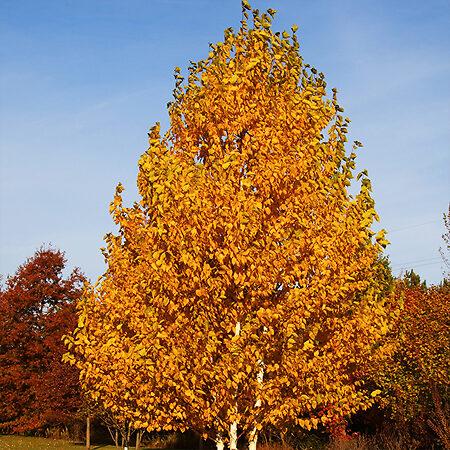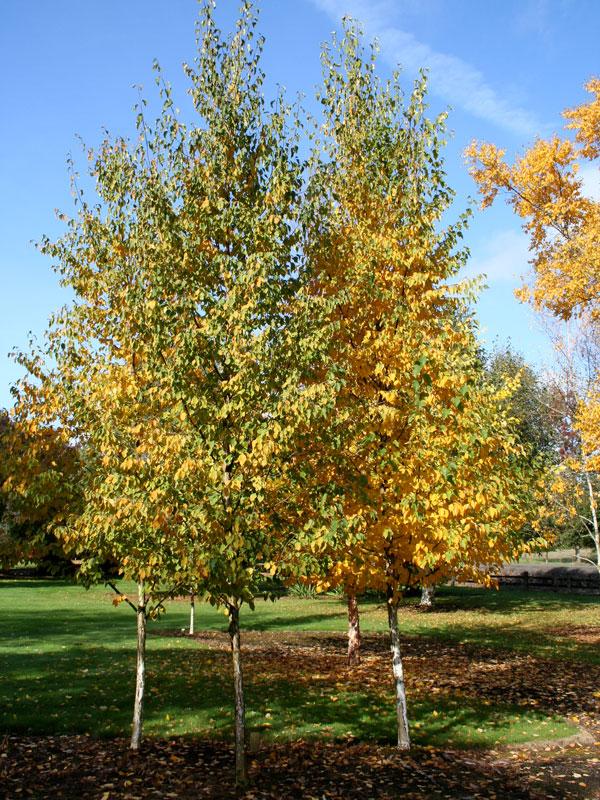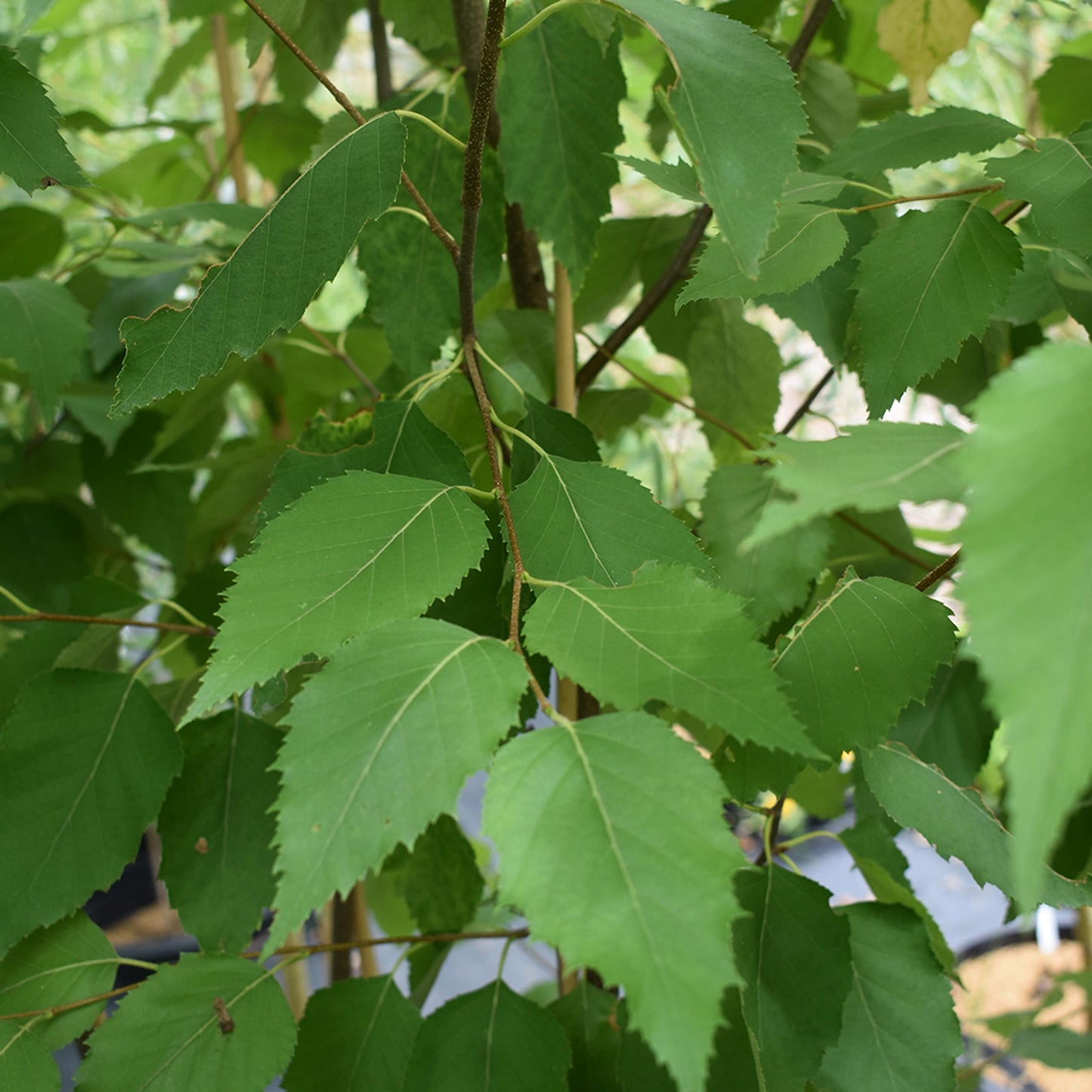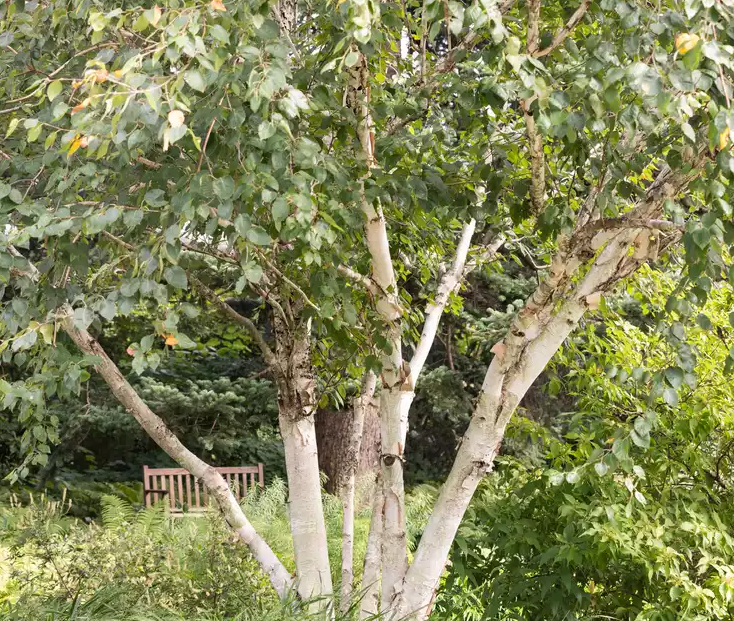1
/
of
20
Renaissance Oasis Paper Birch-Multi Stem-Beautiful tree for gardens 10/12' h B&B
Renaissance Oasis Paper Birch-Multi Stem-Beautiful tree for gardens 10/12' h B&B
Regular price
$1,660.00 USD
Regular price
$2,158.00 USD
Sale price
$1,660.00 USD
Unit price
/
per
Shipping calculated at checkout.
SKU:nto2462-redcrocus
Couldn't load pickup availability
Betula papyrifera 'Renaissance Oasis' - Multi Stem
Description
The 'Renaissance Oasis' Paper Birch is a striking multi-stemmed tree known for its beautiful white bark that peels in large sheets, revealing a creamy underlayer. It provides a stunning visual appeal throughout the year, especially in winter. Its lush green leaves turn a vibrant yellow in the fall, adding seasonal interest to any landscape.
Suggested Uses
This birch is ideal for use as a specimen tree in gardens or parks. It can also be planted in groups for a naturalistic look or used to create a privacy screen. Its attractive bark and foliage make it a popular choice for enhancing winter landscapes.
Plant Details
-
 Botanical Name: Betula papyrifera 'Renaissance Oasis' - Multi Stem
Botanical Name: Betula papyrifera 'Renaissance Oasis' - Multi Stem -
 Common Name: Renaissance Oasis' Paper Birch
Common Name: Renaissance Oasis' Paper Birch -
 Size & Growth: Typically grows to 40-70 feet tall with a spread of 30-50 feet
Size & Growth: Typically grows to 40-70 feet tall with a spread of 30-50 feet -
 Hardiness Zones: 2-7
Hardiness Zones: 2-7 -
 Foliage Type: Deciduous
Foliage Type: Deciduous -
 Bloom Time: Spring
Bloom Time: Spring -
 Growth Rate: Fast
Growth Rate: Fast -
 Light Requirements: Full sun to partial shade
Light Requirements: Full sun to partial shade -
 Attracts Pollinators: Yes
Attracts Pollinators: Yes -
 Indoor Friendly: No
Indoor Friendly: No -
 Container Friendly: No
Container Friendly: No -
 Deer Resistant: No
Deer Resistant: No -
 Pet Warning: Non-toxic
Pet Warning: Non-toxic -
 Fragrant: No
Fragrant: No -
 Cut Flower: No
Cut Flower: No -
 Grows Well With: Other birches, dogwoods, and willows
Grows Well With: Other birches, dogwoods, and willows
Care Tips
-
 Planting Instructions: Plant in early spring or fall in well-drained soil
Planting Instructions: Plant in early spring or fall in well-drained soil -
 Soil Moisture: Keep soil consistently moist, especially in dry periods
Soil Moisture: Keep soil consistently moist, especially in dry periods -
 Soil Type: Prefers sandy, loamy, or clay soils
Soil Type: Prefers sandy, loamy, or clay soils -
 Humidity: Tolerates a range of humidity levels
Humidity: Tolerates a range of humidity levels -
 Pruning Instructions: Prune in late winter to early spring to maintain shape
Pruning Instructions: Prune in late winter to early spring to maintain shape -
 Winter Care: Mulch around the base to protect roots in harsh winters
Winter Care: Mulch around the base to protect roots in harsh winters -
 Planting Depth: Plant at the same depth as in the nursery container
Planting Depth: Plant at the same depth as in the nursery container -
 Fertilization: Fertilize in early spring with a balanced fertilizer
Fertilization: Fertilize in early spring with a balanced fertilizer -
 Special Care: Avoid planting in areas prone to drought
Special Care: Avoid planting in areas prone to drought
Share
